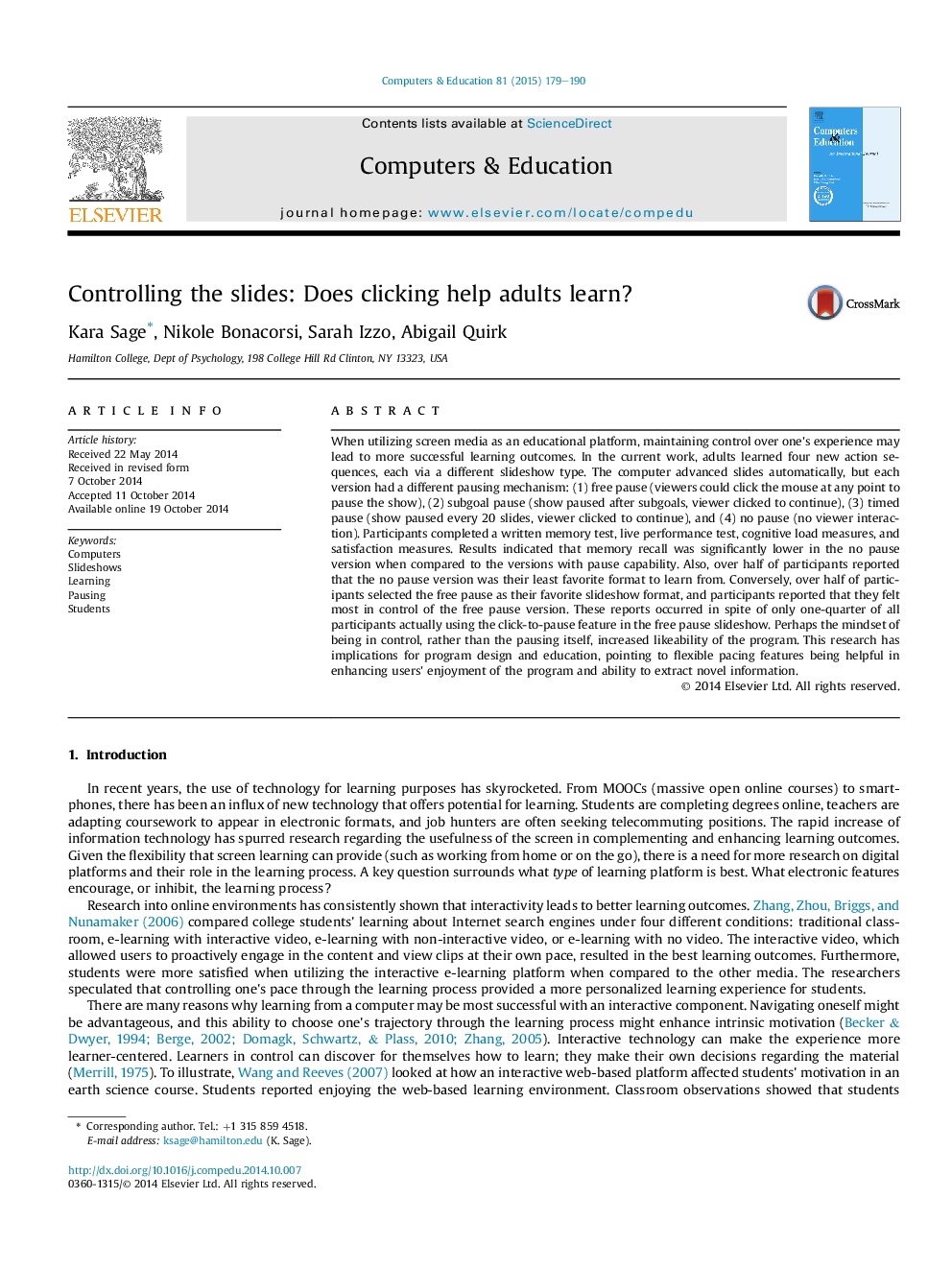| Article ID | Journal | Published Year | Pages | File Type |
|---|---|---|---|---|
| 348334 | Computers & Education | 2015 | 12 Pages |
•Memory is better after viewing slideshows with some pausing function.•Learners reported liking the slideshow without pause capability the least.•Learners reported liking the slideshow with a click-to-pause feature the best.•The mindset of being in control seemed to be particularly beneficial.•Flexible design and blended user/computer control are optimal for screen learning.
When utilizing screen media as an educational platform, maintaining control over one's experience may lead to more successful learning outcomes. In the current work, adults learned four new action sequences, each via a different slideshow type. The computer advanced slides automatically, but each version had a different pausing mechanism: (1) free pause (viewers could click the mouse at any point to pause the show), (2) subgoal pause (show paused after subgoals, viewer clicked to continue), (3) timed pause (show paused every 20 slides, viewer clicked to continue), and (4) no pause (no viewer interaction). Participants completed a written memory test, live performance test, cognitive load measures, and satisfaction measures. Results indicated that memory recall was significantly lower in the no pause version when compared to the versions with pause capability. Also, over half of participants reported that the no pause version was their least favorite format to learn from. Conversely, over half of participants selected the free pause as their favorite slideshow format, and participants reported that they felt most in control of the free pause version. These reports occurred in spite of only one-quarter of all participants actually using the click-to-pause feature in the free pause slideshow. Perhaps the mindset of being in control, rather than the pausing itself, increased likeability of the program. This research has implications for program design and education, pointing to flexible pacing features being helpful in enhancing users' enjoyment of the program and ability to extract novel information.
